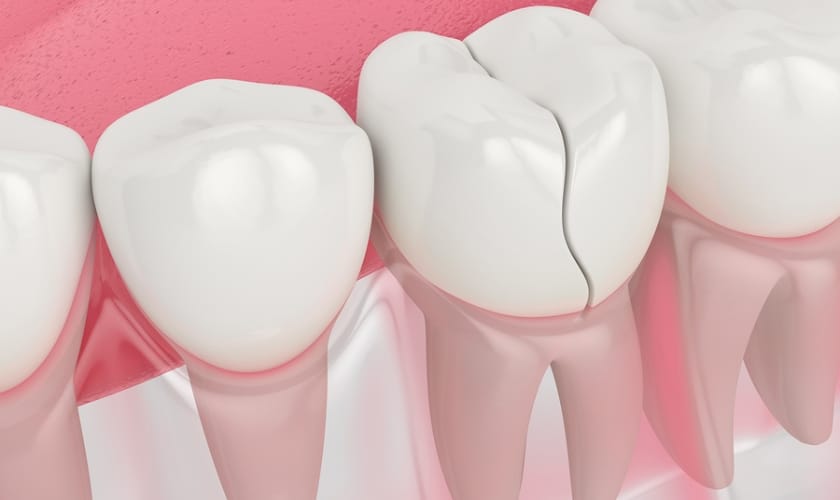
A broken molar can be a distressing and painful experience. Whether it’s due to an accident, a cavity, or even just wear and tear, knowing how to handle a broken molar is crucial to managing pain, preventing further damage, and seeking appropriate dental care. This article will guide you through the steps you should take if you find yourself with a broken molar.
Understanding the Situation
A molar is a large, flat tooth located at the back of your mouth, designed for grinding and crushing food. A molar breaking in half typically involves the following:
- Fractured Crown: The top part of the tooth (crown) is broken or chipped.
- Broken Root: The root portion of the tooth may also be affected, leading to potential complications.
Immediate Actions to Take
- Rinse Your Mouth: Gently rinse your mouth with warm water to cleanse the area and eliminate any leftover particles. Steer clear of hot or cold water, as this may lead to discomfort.
- Control Any Bleeding: Apply Pressure. In case of bleeding, take a clean piece of gauze or cloth and press it gently against the injured area. This will assist in managing the bleeding and alleviating discomfort.
- Manage Pain: Over-the-counter pain relief involves using medications like ibuprofen or acetaminophen to alleviate pain. It is important to avoid applying aspirin directly to the gums, as this may lead to irritation.
- Protect the Broken Tooth: If the broken piece has sharp or jagged edges, use dental wax or a small piece of sugar-free gum to safeguard your gums and the inside of your mouth from injury.
- Avoid Certain Foods: Stick to soft foods and avoid chewing on the affected side of your mouth to prevent further damage or discomfort.
Steps to Take Before Seeing a Dentist
- Keep the Broken Piece: If you have a piece of the broken tooth, keep it in a container with milk or saline solution. This can be helpful if your dentist decides to try to reattach it.
- Schedule a Dental Appointment: Contact your dentist as soon as possible to schedule an emergency appointment. Delaying treatment can lead to complications such as infection or further damage.
- Avoid Using the Tooth: Safeguard the area and refrain from chewing or biting with the affected molar until you consult your dentist.
Treatment Options Your Dentist Might Recommend
The treatment for a broken molar will depend on the severity of the break. Some common options include:
- Dental X-Rays: Your dentist will likely take X-rays to assess the extent of the damage, including the condition of the root and surrounding bone.
- Dental Bonding: Your dentist may be able to repair the tooth using dental bonding for minor chips or cracks. This involves applying a resin material to the tooth and curing it with a special light.
- Dental Crown: If a significant portion of the tooth is missing, a dental crown may be necessary. A crown is a custom-made cap that covers the entire tooth.
- Root Canal: If the crack extends into the pulp of the tooth, a root canal may be required to remove the infected or damaged pulp. A crown is usually placed over the tooth after a root canal.
- Tooth Extraction: In severe cases, the tooth may need to be extracted. This is usually a last resort.
- Pain and Infection Management: Your dentist may prescribe antibiotics if there’s an infection or recommend pain management strategies to ensure comfort during the healing process.
Preventive Measures for the Future
- Good Oral Hygiene: Consistent brushing and flossing are essential for upholding a strong oral hygiene practice, helping to avoid cavities and other problems that may result in tooth damage.
- Regular Dental Check-Ups: Schedule dental appointments for regular dental check-ups and cleanings. Identifying potential issues early can prevent serious damage.
- Avoid Hard Foods: Practice careful eating by being aware of chewing tough items like ice or hard candies, as they can strain your teeth and heighten the chance of fractures.
- Wear a Mouthguard: If you participate in contact sports or grind your teeth, think about wearing a mouthguard to shield your teeth from harm.
A broken molar demands immediate attention to manage pain, prevent additional damage, and ensure proper dental care. Acting quickly by following these steps and seeking prompt treatment is crucial for protecting your oral health and addressing the issue effectively. If you encounter a broken molar, your dentist is the best resource for accurate diagnosis and treatment. In a dental emergency, contact your Cedar Park emergency dentist right away to schedule an appointment and receive the necessary care. Early intervention is key to achieving a favorable outcome and maintaining your overall dental health.




